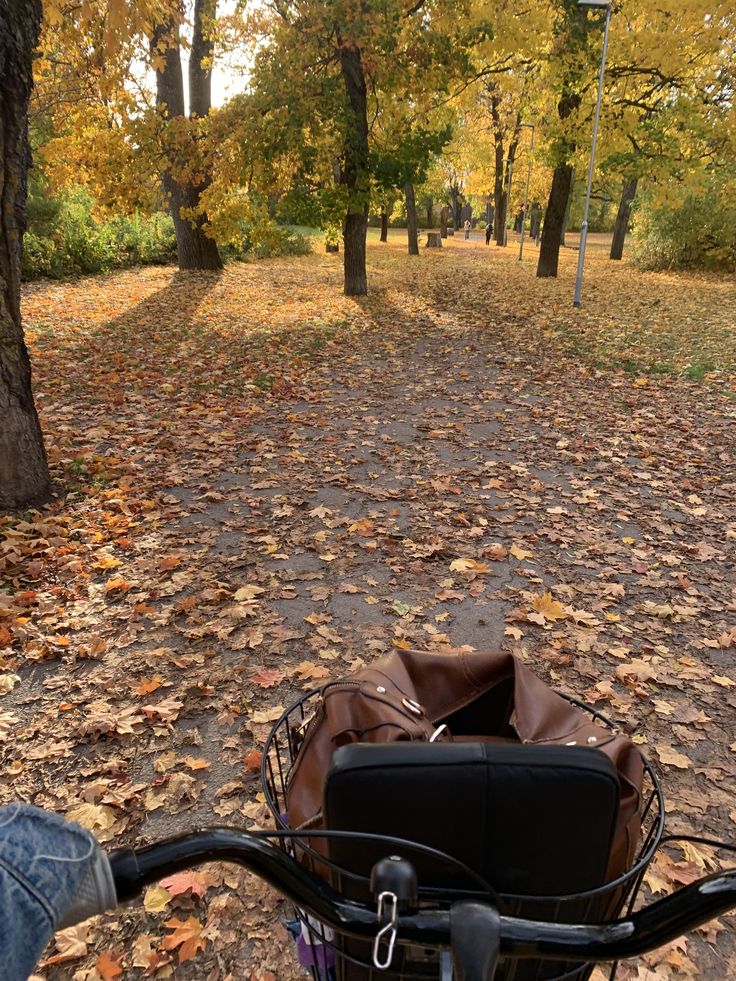As the days grow shorter and the air turns cooler, you might notice your energy dip or your mood shift. This seasonal slump, often called the autumn blues, is more common than you think. You can ease these feelings by making small but intentional changes to your daily routine.
You don’t have to wait for spring to feel better. Simple steps like spending more time in natural light, staying active, and keeping social connections strong can make a real difference. By adjusting how you approach the season, you can feel more balanced and even find ways to enjoy autumn.
Instead of letting the darker months weigh you down, use them as an opportunity to reset and care for yourself. With the right strategies, you can move through fall with more energy and a brighter outlook.



Key Takeaways
- Autumn blues are common but manageable with the right approach
- Small lifestyle adjustments can improve mood and energy
- Embracing seasonal changes helps create a more positive experience
Understanding Autumn Blues
You may notice your mood shift as the days get shorter, the weather cools, and your daily habits change. These shifts can affect your energy, sleep, and motivation in ways that feel different from the rest of the year.
What Causes Autumn Blues?
Autumn blues often begin when daylight hours decrease. Less sunlight affects your body’s internal clock, or circadian rhythm, which helps regulate sleep and mood. When this rhythm is disrupted, you may feel more tired or irritable.
Changes in weather also play a role. Cooler temperatures and shorter days can limit outdoor activity, reducing your exposure to natural light and movement. This lack of stimulation may leave you feeling sluggish.
Lifestyle changes matter too. During fall, routines often shift with school schedules, work demands, or less social activity. Less time spent outside or connecting with others can contribute to feelings of isolation.
In short, autumn blues usually develop from a mix of biological, environmental, and lifestyle factors rather than a single cause.
Common Signs and Symptoms
You might not always notice autumn blues at first, but there are consistent patterns. Low energy and fatigue are common, even if you sleep enough. You may also feel less motivated to do things you usually enjoy.
Mood changes are another signal. It’s normal to feel a dip in enthusiasm, but if you find yourself unusually sad, irritable, or anxious, it could point to seasonal changes affecting your mental health.
Other symptoms include:
- Changes in sleep: sleeping more than usual or having trouble waking up
- Shifts in appetite: craving carbohydrates or comfort foods
- Difficulty concentrating: finding it harder to focus or stay productive
Recognizing these signs early can help you take steps to manage them before they intensify.
Seasonal Affective Disorder vs. Autumn Blues
It’s important to distinguish between autumn blues and Seasonal Affective Disorder (SAD). While they share similarities, the intensity and impact differ.
Autumn blues are usually mild and temporary. You may feel low in energy or mood, but you can still manage daily responsibilities. Symptoms often improve with simple adjustments like more daylight exposure, exercise, or structured routines.
SAD, however, is a form of clinical depression. It can cause significant disruption to your daily life, with stronger symptoms such as persistent sadness, loss of interest in activities, and major changes in sleep or appetite.
If your symptoms interfere with work, relationships, or your ability to function, you may be experiencing SAD rather than typical autumn blues. In that case, professional support can make a big difference.



Practical Strategies to Overcome Autumn Blues
You can reduce seasonal low moods by spending more time outside, creating consistent daily habits, and keeping strong connections with the people around you. Small, steady actions often make the biggest difference in how you feel during the colder months.
Boosting Mood With Outdoor Activities
Spending time outdoors helps regulate your body’s internal clock and supports better sleep. Even short walks in natural light can lift your mood by increasing vitamin D levels and balancing your energy. Aim for at least 20–30 minutes outside each day, especially in the morning.
Simple activities like hiking, biking, or just taking a different walking route can make the season feel fresh. Pay attention to the changing colors, cooler air, and quieter surroundings. These small details can help you feel more grounded.
If you struggle to fit in outdoor time, try pairing it with something you already do. For example, take work calls while walking or plan social catch-ups outside. Making outdoor time part of your routine increases the chance you’ll stick with it.
Establishing Healthy Routines
A steady routine helps stabilize your mood and energy when days grow shorter. Going to bed and waking up at the same time supports healthy sleep, which directly affects how you feel. Consistency also reduces stress by giving your day structure.
Focus on simple habits that keep your body and mind balanced:
- Exercise: Even light movement like stretching or yoga helps.
- Nutrition: Choose foods rich in protein, fiber, and healthy fats to avoid energy crashes.
- Light exposure: Use a daylight lamp if natural light is limited.
Keeping your evenings cozy but not overly sedentary can also help. Reading, journaling, or cooking a warm meal can replace endless screen time and give you a sense of accomplishment.
Staying Connected With Others
Isolation can make seasonal blues feel heavier. Staying connected with friends, family, or community groups provides emotional support and keeps your mind engaged. Even short conversations can improve your mood.
Plan regular check-ins, whether through phone calls, shared meals, or group activities. You don’t need large gatherings—small, consistent interactions are often enough.
If you find it difficult to reach out, set reminders or schedule recurring meetups. Volunteering or joining a class can also connect you with new people. Building these social anchors helps you feel less alone during darker months.



Lifestyle Changes and Self-Care
Small adjustments in daily routines can ease low mood, boost energy, and make seasonal transitions more manageable. Paying attention to what you eat, how you move, and the way you rest can help you feel more balanced during autumn.
Nutrition and Eating Well
What you eat has a direct effect on energy and mood. Shorter days often mean less sunlight, which can lower vitamin D levels. Including foods like salmon, eggs, and fortified cereals can help support your body.
Complex carbohydrates such as oats, brown rice, and whole-grain bread provide steady energy and may improve serotonin production. Pairing these with lean proteins keeps you full and reduces energy crashes.
Try to include seasonal produce like squash, apples, and root vegetables. These foods are nutrient-rich and support immune health as the weather cools.
Limiting processed sugar and caffeine helps prevent mood swings. Instead, choose snacks like nuts, yogurt with fruit, or hummus with vegetables for stable energy throughout the day.
Exercise for Mental Wellbeing
Regular movement supports both physical and mental health. Exercise increases endorphins, which can lift your mood and reduce stress. Even short daily activities make a difference.
You don’t need a strict workout plan. A brisk 20-minute walk outside, light stretching, or cycling can help you stay active. Exposure to daylight during outdoor activity also supports vitamin D levels and helps regulate your body clock.
If the weather makes outdoor exercise difficult, try at-home routines. Bodyweight exercises, yoga, or online fitness classes are easy to adapt to your schedule.
Choose activities you enjoy so you’ll be more likely to stick with them. Consistency matters more than intensity when it comes to supporting mental wellbeing.
Improving Sleep Habits
The shift to shorter days can disrupt your sleep routine. Going to bed and waking up at the same time each day helps regulate your body’s internal clock.
Limit screen use before bed since blue light can interfere with melatonin production. Instead, try calming activities like reading, journaling, or gentle stretching.
Keep your bedroom cool, dark, and quiet to promote deeper rest. Using blackout curtains or a white noise machine can improve sleep quality.
If you struggle with low energy during the day, short naps of 20–30 minutes can be refreshing without affecting nighttime sleep.



Embracing the Autumn Season
You can make autumn feel less heavy by leaning into what the season naturally offers. Simple activities, cozy routines, and creative outlets can help you feel grounded and more at ease.
Enjoying Seasonal Activities
Autumn gives you plenty of chances to enjoy the outdoors before winter sets in. Walking through a park with colorful leaves or visiting a local pumpkin patch gets you moving and helps you soak up natural light. Even short outdoor breaks can lift your mood.
You might also enjoy seasonal foods and events. Apple picking, farmers’ markets, or fall festivals connect you with your community and give you something to look forward to. These activities don’t have to be elaborate—sometimes a walk with a hot drink in hand is enough.
A simple way to plan is to list 3 seasonal activities you want to try this year. Keep them realistic, like:
- Take one weekend hike.
- Try a new fall recipe.
- Attend a local autumn event.
Finding Comfort in Cozy Moments
Colder weather makes it easier to spend time indoors, so creating a cozy environment can help you feel more relaxed. Soft blankets, warm lighting, and a favorite chair can turn your living space into a place where you feel safe and comfortable.
Hot drinks like tea, cider, or cocoa are small comforts that can improve your mood. Pairing them with a good book or calming music makes the experience even better.
You can also build small rituals into your evenings. Lighting a candle at the same time each night or journaling for ten minutes can bring a sense of consistency, which is often grounding during seasonal changes.
Creative Ways to Appreciate Autumn
Autumn has a strong visual and sensory appeal, and using creativity helps you connect with it more fully. Photography, sketching, or even simple leaf-pressing lets you capture the colors and textures around you.
If you enjoy cooking, experimenting with seasonal produce like squash, apples, or root vegetables can spark creativity in the kitchen. Trying new recipes can also make meals feel more enjoyable and nourishing.
You might also explore crafts such as knitting, wreath-making, or DIY home décor. These projects give you something tangible to focus on and allow you to bring the season’s character indoors.






